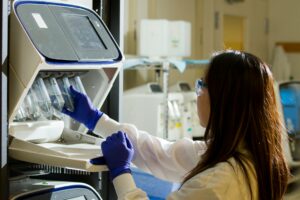Exploring the World of Radiology: Advancements, Applications, and Future Trends

Radiology is a pivotal field within medical science, playing a crucial role in the diagnosis, treatment, and monitoring of various health conditions. With continuous technological advancements, radiology has transformed healthcare, offering more precise and non-invasive methods to understand and treat diseases. This article delves into the depths of radiology, exploring its significance, advancements, applications, and future trends.
Understanding Radiology
Radiology is a branch of medicine that uses imaging technologies to diagnose and treat diseases. It encompasses a variety of imaging techniques, each offering unique insights into the human body. These techniques include:
- X-ray Radiography
- Ultrasound
- Magnetic Resonance Imaging (MRI)
- Computed Tomography (CT)
- Nuclear Medicine
- Interventional Radiology
Each modality has its specific applications, benefits, and limitations, collectively contributing to comprehensive patient care.
Advancements in Radiology
Digital Radiography
Digital Radiography has revolutionized traditional X-ray imaging by replacing film with digital sensors. This advancement offers several benefits:
- Enhanced Image Quality: Digital images provide greater detail and contrast, improving diagnostic accuracy.
- Reduced Radiation Exposure: Digital systems require less radiation to produce high-quality images.
- Improved Workflow Efficiency: Images are immediately available for review, reducing wait times and facilitating quicker diagnoses.
Magnetic Resonance Imaging (MRI)
MRI uses strong magnetic fields and radio waves to generate detailed images of internal body structures. Recent advancements in MRI technology include:
- Higher Resolution Imaging: Advanced MRI machines offer higher resolution images, allowing for better visualization of small structures.
- Functional MRI (fMRI): fMRI measures brain activity by detecting changes in blood flow, providing insights into brain function and aiding in the study of neurological disorders.
- 3T and 7T MRI: These high-field MRI scanners offer greater detail and faster imaging times, improving diagnostic capabilities.
Computed Tomography (CT)
CT Scans combine X-ray images taken from different angles to create cross-sectional views of the body. Innovations in CT technology include:
- Low-Dose CT: Techniques that reduce radiation exposure while maintaining image quality, crucial for frequent scans, particularly in cancer screening.
- Dual-Energy CT: This technology uses two different X-ray energy levels to differentiate between various types of tissues and materials, enhancing diagnostic accuracy.
- AI Integration: Artificial intelligence algorithms assist in image reconstruction and interpretation, reducing the workload on radiologists and improving diagnostic precision.
Ultrasound
Ultrasound uses high-frequency sound waves to produce images of internal organs and structures. Recent developments in ultrasound technology include:
- 3D and 4D Ultrasound: These advancements provide real-time three-dimensional images, offering better visualization of fetal development and anatomical structures.
- Elastography: This technique measures tissue stiffness, helping in the assessment of liver fibrosis and the detection of tumors.
- Portable Ultrasound Devices: Handheld ultrasound devices offer point-of-care imaging, enabling immediate diagnosis and treatment in various clinical settings.
Applications of Radiology
Radiology plays a vital role in numerous medical specialties, aiding in diagnosis, treatment planning, and monitoring. Some key applications include:
Oncology
Radiology is integral to cancer diagnosis and management. Imaging techniques such as CT, MRI, and PET scans help detect tumors, determine their size and location, and monitor response to treatment. Interventional radiology techniques, such as image-guided biopsies and tumor ablations, offer minimally invasive treatment options.
Cardiology
In cardiology, radiology is used to visualize the heart and blood vessels. Coronary angiography, cardiac MRI, and CT angiography provide detailed images of the cardiovascular system, aiding in the diagnosis of conditions like coronary artery disease, congenital heart defects, and aortic aneurysms.
Neurology
Radiology is crucial in the field of neurology, helping diagnose and treat brain and spinal cord disorders. MRI and CT scans are commonly used to detect conditions such as strokes, tumors, multiple sclerosis, and traumatic brain injuries. Functional MRI (fMRI) and diffusion tensor imaging (DTI) offer insights into brain function and neural pathways.
Musculoskeletal
In the musculoskeletal system, radiology helps diagnose injuries and diseases affecting bones, joints, and soft tissues. X-rays, MRI, and ultrasound are used to identify fractures, ligament tears, arthritis, and other conditions, guiding appropriate treatment strategies.
Gastroenterology
Radiology aids in the diagnosis and management of gastrointestinal disorders. Ultrasound, CT, and MRI are used to visualize organs like the liver, pancreas, and intestines, detecting conditions such as liver disease, pancreatitis, and inflammatory bowel disease. Interventional radiology procedures, such as bile duct stenting and liver biopsies, provide therapeutic solutions.
The Future of Radiology
Artificial Intelligence and Machine Learning
AI and machine learning are poised to revolutionize radiology by enhancing image analysis and interpretation. AI algorithms can:
- Detect abnormalities with high accuracy.
- Reduce diagnostic errors by providing second opinions.
- Streamline workflows by automating routine tasks.
Hybrid Imaging Techniques
The development of hybrid imaging techniques, such as PET/MRI and PET/CT, combines the strengths of different modalities, providing more comprehensive diagnostic information. These techniques improve disease detection and characterization, particularly in oncology and neurology.
Radiomics
Radiomics involves extracting quantitative features from medical images to create detailed data sets. This approach can uncover patterns not visible to the naked eye, offering insights into disease prognosis and treatment response, paving the way for personalized medicine.
Teleradiology
Teleradiology enables the transmission of radiological images over the internet, allowing radiologists to interpret images remotely. This technology expands access to radiology services, particularly in rural and underserved areas, ensuring timely diagnosis and treatment.
Conclusion
Radiology continues to be a cornerstone of modern medicine, driving advancements in diagnosis, treatment, and patient care. The field is constantly evolving, with innovations in imaging technology, artificial intelligence, and personalized medicine shaping its future. As radiology progresses, it promises to enhance healthcare delivery, improve patient outcomes, and transform the landscape of medical science.





